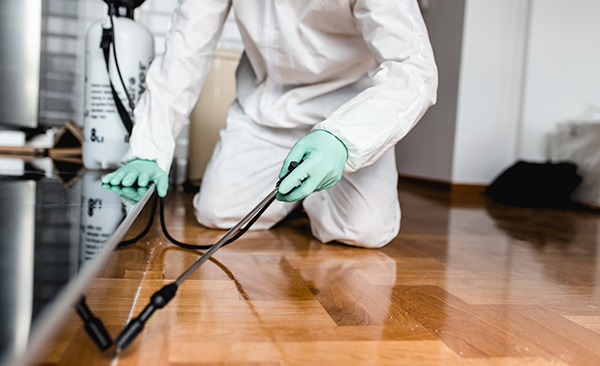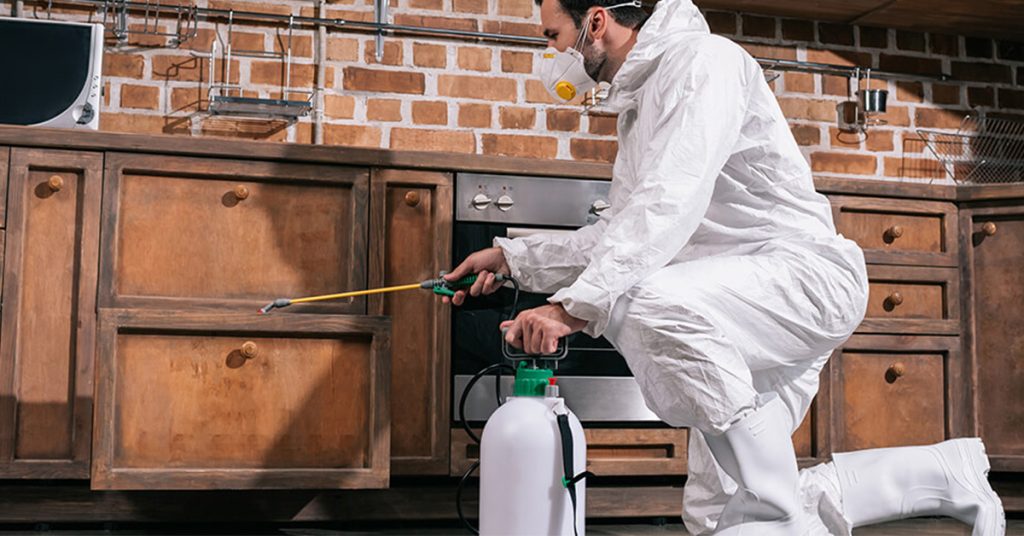Checking Out Infestation and Therapy Methods on the planet of Pest Control
The landscape of parasite control encompasses a myriad of difficulties, especially as invasions of common house insects continue to progress. Comprehending the actions and reproductive patterns of these annoyances is important for developing reliable treatment approaches. By integrating safety nets with advanced administration strategies, such as Integrated Bug Management (IPM), home owners can better guard their environments. Nevertheless, the effectiveness of these techniques might vary dramatically based upon specific scenarios. What hidden variables contribute to the success or failing of these approaches in different settings?

Typical Family Vermin
When it involves handling our space, comprehending typical house pests is essential. These bugs not just interrupt our convenience yet can additionally posture wellness risks and damages residential or commercial property. The most common home insects include ants, cockroaches, rodents, termites, and bed bugs.
Ants, usually seen foraging in kitchens, can pollute food and establish large nests. Rodents, including computer mice and rats, can cause structural damages and lug diseases like hantavirus and salmonella.
Recognizing the indicators of these bugs, such as droppings, nests, or bite marks, is crucial for very early intervention (Pest Control Lockhart). Correct cleanliness techniques, sealing entry factors, and maintaining a clutter-free setting work preventative measures. By recognizing these typical house bugs and understanding their actions, property owners can take aggressive steps to minimize invasions, guaranteeing a much healthier living environment
Comprehending Pest Infestations
Bug infestations can intensify promptly, turning a small inconvenience right into a significant issue otherwise dealt with immediately. Understanding the nature of these problems is essential for reliable management. Insects can attack residential and industrial rooms for numerous reasons, consisting of the look for food, sanctuary, or breeding grounds. Usual variables adding to invasions consist of inadequate sanitation, structural susceptabilities, and seasonal adjustments that drive pests indoors.
Identifying the sort of parasite is essential, as various varieties show diverse habits and reproductive prices. As an example, rodents may establish nests in hidden areas while insects like cockroaches grow in wet settings. Early detection typically rests on recognizing signs such as droppings, gnaw marks, or uncommon audios, which can suggest a problem prior to it comes to be serious.
Environmental conditions also play a crucial function in insect proliferation. Cozy, moist climates can help with the rapid development of pest populations, while adjustments in landscaping or construction can accidentally produce conducive settings. Consequently, routine inspections and preventative steps are paramount to minimizing the danger of infestations. An informed technique to understanding these characteristics lays the groundwork for reliable pest monitoring techniques in the future.
Treatment Approaches and Techniques
Efficient therapy approaches and techniques are vital for minimizing pest invasions and recovering a safe environment. A diverse technique is often best, integrating chemical, organic, and mechanical approaches customized to the specific insect and the intensity of the problem.
Chemical therapies include making use of insecticides and herbicides, which can efficiently get rid of bugs. Proper application and adherence to safety guidelines are critical to minimize risks to humans and non-target organisms. Integrated Pest Management (IPM) urges the wise usage of chemicals as a last hope, depending instead on monitoring and limit degrees to establish treatment requirements.
Organic control techniques involve presenting all-natural predators or bloodsuckers to minimize insect populaces. This technique is progressively popular, specifically in agricultural settings, as it advertises environmental sustainability.
Mechanical approaches, such as traps and obstacles, supply immediate remedy for insects without presenting chemicals. Alternatives include sticky catches for bugs or physical obstacles for rodents.
Inevitably, the option of therapy technique should take into consideration the certain pest, the setting, and potential influences on human health and ecosystems. A balanced mix of these strategies can properly manage problems while promoting long-lasting pest control services.
Preventative Steps for Residence
Proactively dealing with bug concerns before they rise is important for keeping a healthy and balanced home environment (Pest Control Lockhart). Carrying out reliable safety nets Your Domain Name can significantly minimize the likelihood of infestations, eventually guarding both your residential property and health

Proper landscaping also plays an important function in prevention. Keeping bushes and trees trimmed away from your house decreases the chances of pests finding their way inside. Ensure that water drainage systems are functioning successfully to stop standing water, which can attract in insects and various other pests.
Last but not least, routine evaluations are recommended. Consistently examining for indications of pest activity permits very early treatment. By adopting these safety nets, homeowners can develop an atmosphere that is less friendly to bugs, thus enhancing their total high quality of life and reducing the requirement for comprehensive parasite control treatments.
Commercial Bug Control Techniques
An extensive approach to business insect control is essential for services aiming to preserve a secure and hygienic setting. Efficient approaches entail a combination of normal inspections, worker training, and the implementation of Integrated Bug Monitoring (IPM) methods.
Normal inspections allow very early detection of parasite activity, enabling prompt intervention. Companies need to develop a routine timetable for these analyses, focusing on risky areas such as kitchen areas, storeroom, and waste disposal sites. Worker training is just as crucial; personnel must be enlightened on the indications of parasite infestations and the significance of reporting them promptly.
Applying IPM practices helps reduce bug concerns sustainably. This consists of environment modification, such as sealing access points and minimizing mess, along with using all-natural deterrents prior to considering chemical treatments.

Additionally, teaming up with a this link qualified pest control company makes sure accessibility to professional understanding and sophisticated treatment choices. This collaboration can bring about personalized pest control intends tailored to the specific needs of business, minimizing risks and enhancing see here now total efficiency. Inevitably, a positive and educated method fosters a pest-free environment, guarding both public wellness and service track record.
Final Thought
To conclude, effective pest control demands a thorough understanding of typical home pests and their actions, combined with targeted treatment approaches. Carrying out precautionary steps along with therapy techniques such as Integrated Parasite Administration and biological control boosts the capability to minimize invasions. Regular examinations and a mix of chemical and mechanical services better add to maintaining pest-free atmospheres. Ultimately, a well-rounded technique to pest management is crucial for securing living spaces from undesirable intruders.
Comments on “Expert Pest and Rodent Removal by Pest Control Lockhart”